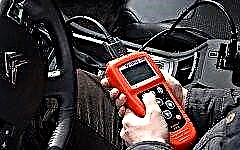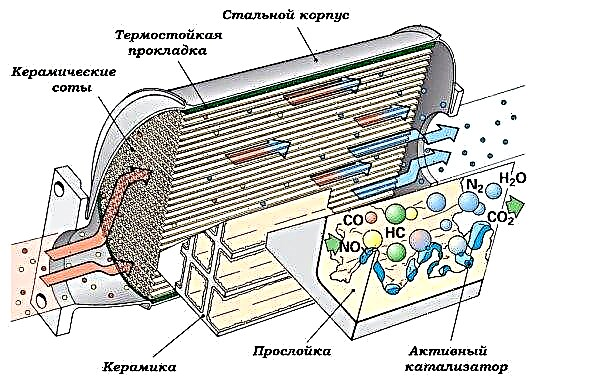Many car owners, after a certain period of car operation, begin to think about how to remove the catalyst. We will talk about this.

The content of the article:
- How to check
- Repair
- How to delete
- How to pierce
The catalyst serves to oxidize the remaining harmful emissions contained in the exhaust gases. To do this, various oxides, mainly titanium, are applied to the honeycomb, which accelerate this process.
How to check the catalyst

Before removing the catalyst, you need to make sure that it is the problem. There is a list of the most common symptoms, so there should be no problems with this:
- The engine pulls noticeably worse, especially at high revs;
- The engine picks up speed worse, moreover, there is a certain threshold, which, as a rule, is 4-5 thousand revolutions;
- It is difficult to start the engine, especially on a cold one. The problem is especially pronounced during the cold season and in the off-season;
- Unstable engine idling.
As you can see from the list, such symptoms can indicate anything, so it is almost impossible to determine that the catalyst is clogged. Therefore, there is a way to check the catalytic converter on the car without removing it.
There are two catalysts on a car: preliminary and main. So, the preliminary is installed directly after the exhaust manifold. We unscrew the oxygen sensor from it, connect an adapter prepared in advance, a hose and a manometer with a step of no more than 0.5 kgf / cm3 to it. We start the engine. If the pressure on the pressure gauge exceeds 0.5, then this definitely indicates that the catalyst is clogged, it must be flushed, or pierced, or replaced. The thing is that the exhaust gases, instead of passing through the honeycomb and going into the front pipe, are retained, creating excess pressure. That is why there is a problem with a set of revs.
How to repair a catalyst

It should be said right away that this method can only bear fruit if the honeycombs in the catalyst are intact and have not burned out. If they are simply clogged, the catalyst can be flushed out with a carburetor flush agent. To do this, remove the neutralizer and rinse it, nothing complicated. You can make holes with a small wire, welding is ideal.
How to remove a catalyst

It has already been mentioned above that two catalysts are installed on cars. So, two sensors are installed in them. The first is always an oxygen sensor. He will have to be deceived in any case. The second can be either an oxygen sensor or an exhaust gas temperature sensor. In the first case, blende is required, in the second it is not.
Instead of a catalyst, the deception is a kind of plug that is installed in place of the sensor, and already the device itself is screwed into this plug. This is so that the system thinks that the oxygen level in the gases is normal. So, if we have one oxygen sensor, then there is one snag, if two, then respectively two.
How to break through a catalyst

Now let's get down to the fun part. I must say right away that there is nothing to do here with a hammer, a crowbar and a crowbar, either you will punch the barrel itself, or bend it. An ideal option is a hammer drill. In addition to being accurate, it also provides excellent efficiency.
We drill two holes, leaving about 1-2 cm of honeycomb around the edges. This is necessary in order to exclude "bubbling". The neutralizer is not designed to be used as a resonator, so if you remove all the cells, it will just rattle. It is advisable to carry out the procedure on the removed parts.
When we break through the pre-catalyst, be sure to remember about the branch pipe, which is tedious for recirculation of exhaust gases. If dust or shavings get into it, then it will fall into the cylinders, where it will do enough trouble to forget about the catalyst.
Some garages offer cutting, cleaning and welding services for catalytic converters, however, this is a waste of time and work because the effect is the same as with normal removal.











